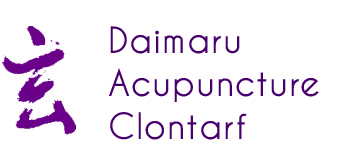

June 29th, 2012 | Posted in 2 Pain, Injuries, Sports
Acupuncture and Sports Injuries:
Article from: The Irish Times – Tuesday, July 19, 2011 SYLVIA THOMPSON
In the west, acupuncture is usually sought out as a treatment for chronic health problems, whether they are musculoskeletal, neurological or even autoimmune in origin. In the past number of years, acupuncture is also being sought out both for the prevention and treatment of sports injuries.
Athletes are finding that acupuncture can be an effective way to treat and prevent all manner of sports injuries. “Sports people are discovering that when they incorporate regular use of acupuncture into a training regime, it allows them to train harder, recover faster from tough workouts and increase their overall sports performance,” says an acupuncturist based in Drogheda, Co Louth.
This interest in acupuncture is developing among both amateur and professional sports people alike. Acute and persistent injuries to hamstrings, partial ligament tears, groin strain, knee pain, tennis and golfer’s elbow and Achilles tendonitis are common sports injuries treated by acupuncture. (article continued later).
Acupuncture’s success with injury is widely known for ‘Tennis Elbow’ and ‘Golfer’s Elbow’ but it is now more widely used by soccer players, rugby players, cyclists , etc. etc and can work just as effectively with in the treatment of :
Tendonitis and Muscle Pain
The tendon is the structure that connects the muscles to the bones. Tendonitis or inflamation of a tendon can occur due to a variety of reasons and the action of using the muscle becomes painful as the normal smooth gliding motion of the tendon is impaired. This inflammation leads to what’s called “local qi and blood congestion in the channels” according to Traditional Chinese Medicine. Acupuncture needles are inserted at or very near to the source of the pain. This helps the local symptoms by improving the circulation of blood (xue) and energy (qi) to the area.
Sprains (ligaments) and Strain (muscle or tendon)
Sprain and strain of a joint and surrounding tissue are one of the most common sports related injuries with swelling of the injured area, redness , bruising and reduced range of motion of the joint.
In addition to conventional treatment – R.I.C.E. (Rest, Ice, Compression, Elevation), Acupuncture treatment is very helpful in reducing inflammation and swelling, fast.
Irish Times Article Cont. And, while it’s mainly still for the treatment of injuries, there are some sportspeople who are having acupuncture sessions prior to a sporting event to enhance performance. David Gillick, 400 metres Irish Olympic athlete, is one such sportsperson who has found acupuncture beneficial. “My physiotherapist introduced me to dry needling about three years ago when I had extremely tight calf muscles,” explains Gillick. “My body responded really well to the treatment and I’ve used it ever since if I’ve tight muscles. Just last Thursday, I had a tight Achilles tendon and she put five or six needles up the back of my leg and it released the tendon.” Gillick says that if you’re stressed, you’re more likely to have an injury. “So acupuncture is also a way of offloading that stress, especially around now coming into the race season. A lot of athletes in the UK where I train are having acupuncture to relax them,” he adds.
Irish Olympic badminton player Scott Evans is another professional sportsperson who has found acupuncture beneficial for the treatment of injuries. “I kept twisting my ankle and have tried just about every treatment you can get for it. About two years ago, I got acupuncture for it and it helped a lot. It brought the swelling down and gave me full movement back in my ankle so I was able to get back on court more quickly,” he explains. Evans currently trains in Denmark, where his physiotherapist incorporates acupuncture into his treatment regime. “I think it’s much more popular in Denmark than in Ireland. A lot of physiotherapists are using acupuncture here.”
Recovery time from injuries can be reduced by up to 50 per cent when acupuncture is used alongside stretching/gentle exercises. This means that an acute condition such as a sprain, train or stiffness can be better faster. Acupuncture also helps to nourish the tendons, ligaments and muscular system by increasing the bloodflow throughout the body.
Dr. Carroll, an acupuncturist and medical doctor, says the key to acupuncture’s effectiveness is that it incorporates the mental/emotional aspects of the injury as well. “Competitiveness is good once there isn’t a sense of bitterness if you don’t succeed,” he explains. “If there’s bitterness, this creates the mental or emotional aspect, which will make sports injuries more likely to happen and acupuncture can treat this dimension too.” Carroll also explains how acupuncture takes a different approach to the injury than the Western medical approach. “Take, for example, a shoulder injury from football. There are six different channels passing through the shoulder area and the acupuncturist needs to be precise and careful as they listen to and examine the patient to understand exactly where to place the needles and get the energy – blood and body fluids – flowing so that the swelling goes down.
Acupuncture is my preferred method of treatment for sports injuries – and indeed for most skeletal muscular injuries – as I consistently find it gives better results than more conventional medicine in that it leads to a quicker mobilisation and less risk of any condition becoming chronic.
End of Article.
